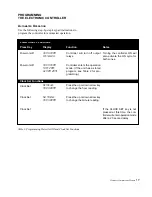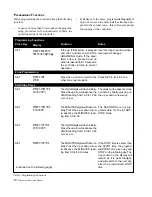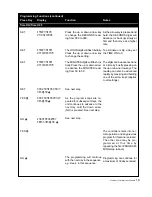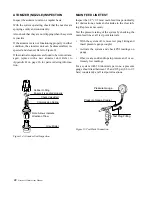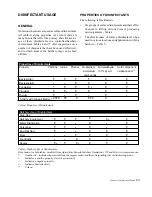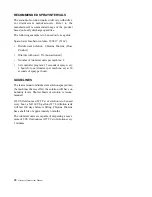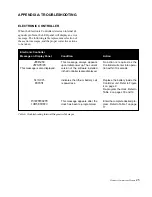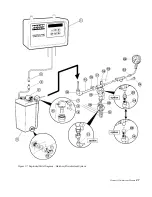
30
Hatchery Disinfectant Manual
APPENDIX C:
ORGANISMS AND SURFACE
DISINFECTANTS
The following unabridged text (pages 27 to 29) is taken
directly from the Commercial Chicken Production
Manual – 4th Edition (147-151), by Mack O. North
and Donald D. Bell, published by Van Nostrand
Reinhold, New York 1993.
GENERAL
Surface disinfectants differ in their action according
to the type of organism involved.
B
ACTERIAL
O
RGANISMS
Most surface disinfectants are bactericidal (kill), but
some chemicals only disrupt the life cycle of the bac-
terium (bacteriostatic). A large number will suppress
the growth of gram-positive bacteria, while others will
inactivate the gram-negative. A disinfectant can be
bactericidal at one concentration and bacteriostatic at
lower levels.
V
IRAL
O
RGANISMS
Viruses pose a special problem for a surface disinfect-
ant inasmuch as viruses are inanimate until housed in
the host cell. Most disinfectants only partially inacti-
vate them. To inactivate a virus, the agent must disrupt
the non-nucleic acid protein coat around the nucleic
acid (gene material) contents. When only the coat, and
not the contents, of the virus is destroyed, the viral nu-
cleic acid can enter the host cell and become reactivated.
F
UNGAL
O
RGANISMS
Surface disinfectants having fungicidal or fungistatic
properties for use in hatcheries or on poultry farms must
be capable of destroying or inactivating the fungal
spores. But the fungus organism is difficult to destroy,
and most fungicides only poison the fungus rather than
destroy the fungal cells.
P
ROTOZOAL
O
RGANISMS
Some, but not all, protozoal parasites spend part of their
life cycle outside the host. Sanitizers effective against
such organisms therefore must make their attack dur-
ing the quiescent life stages, which in themselves vary
and generally represent the most resistant phase of the
organisms’ lives.
There are few surface disinfectants specific for proto-
zoal organisms affecting poultry. Even though several
chemical compounds are applicable, their concentra-
tions and cost make them unacceptable.
CHEMICALS USED FOR DISINFECTING
G
ENERAL
The chemicals used for surface disinfecting are many
and their values are highly variable. Sanitizers may be
grouped according to their base ingredient, but there
are many things that affect their potency, all of which
must be understood to cause the disinfectant to pro-
duce normal effectiveness.
C
RESOLS
AND
C
RESYLIC
A
CID
Cresols and cresylic acid are liquid yellow or brown
coal tar derivatives. They have a strong odour, irritate
the skin, and turn milky when water is added, but they
have excellent germicidal action. Many types are avail-
able; some are used in conjunction with a detergent.
Their odour may injure day-old chicks. They are effec-
tive against gram-positive and gram-negative bacteria,
most fungi, and some viruses. They are compatible with
anionics (charged ionic compounds) but not with
nonionics, and work best in an acid pH. They have
greater use in the poultry house than in the hatchery.
Cresol, also called methyl phenol (C
6
H
4
CH
3
0H), may
be used for disinfecting floors or room surface areas,
equipment, and foot-baths.
P
HENOLS
Phenols are also coal tar derivatives with a base of car-
bolic acid (C
6
H
5
OH). Synthetic related compounds also
fall in this category. Phenols have a characteristic odour,
turn milky in the presence of water, and are effective
germicides. The most common types used as disinfect-
ants are the synthetic arylphenols, the simple
alkylphenols, the halogenated phenols, and the
nitrophenols.
Most phenols are not compatible with the nonionic
(neither anionic or cationic, but produce neutral col-
loidal properties) surfactants and should not be used


